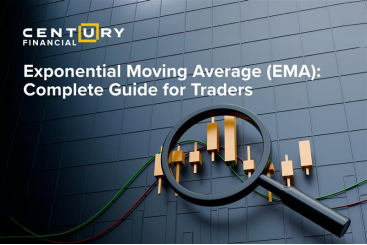Tuesday, August 20, 2024
Elections 2024: How stocks perform in election years
By Century Financial in 'Blog'


As the presidential election approaches, investors pay attention to the stock market to understand how political shifts might impact their portfolios. By examining past performance, investors can better prepare for the uncertainties and volatility of election years.
While past performance does not indicate future results, here’s a look at how the S&P 500 index has performed during past presidential elections.

Source: T. Rowe Price analysis of data from Bloomberg Finance L.P.
The S&P 500 returned 15.3% on average annually when a Republican was elected to office. The average annual return was 7.6% when a Democrat was elected. 1928 was the best year for the stock market during a presidential election, returning 43.6%, while 2008 saw the lowest returns, returning -37 %

Source: Morganstanley.com
According to a Morgan Stanley analysis, the S&P 500 performed well in 83% of the 23 election years between 1928 and 2016. There were four minus years: 1932, 1940, 2000, and 2008.
It's important to note that years with unfavourable results were associated with noteworthy economic developments, affecting the stock market more than the elections. Consider the Great Depression of 1932, the outbreak of World War II in 1940, the collapse of the dot-com bubble in 2000, and the 2008 housing market meltdown.
What is the presidential election cycle theory?
To better understand the potential impact of elections on the stock market, it can be helpful to take a step back and look at trends across an entire four-year presidential cycle instead of focusing solely on election years.
According to this theory:
- Year 1 (post-election year): Markets often experience a dip as the new president implements policies and reforms. Investors are cautious due to uncertainty about the new administration’s economic agenda.
- Year 2 (midterm election year): Market volatility typically increases. Historically, this year has been the weakest in the cycle as midterm elections create political uncertainty and potential legislative gridlock.
- Year 3 (pre-election year): This year is usually the strongest for the stock market. Presidents often push for policies that stimulate the economy and improve market performance to boost their re-election chances or their party’s prospects.
- Year 4 (election year): Market performance can vary. During this time, investors react to the election campaigns, candidates’ platforms and potential changes in economic policy.

Regardless of which party wins the presidency, markets are trending higher: The stock market's success has not been significantly impacted by the party in office. The general market trend has been rising during the administrations of eight Democratic and eight Republican presidents since 1933. For investors, it is more important to stick to a long-term investing strategy than the outcome of an election.
Parties typically win reelection when the S&P 500 rises: The stock market's behavior in the lead-up to presidential elections has been a remarkably accurate predictor, anticipating 20 of the last 24 outcomes since 1936. Historically, when the S&P 500 Index rises in the three months preceding an election, the incumbent party is likely to retain power. Conversely, a decline in the S&P 500 during this period often signals a change in leadership.
This correlation occurs because equity markets tend to "price in" future uncertainties, particularly upcoming elections. Investors' expectations about the potential impacts of political shifts on the economy drive market performance, making the S&P 500 a forward-looking indicator in the electoral context.
Returns are increased by staying committed and contributing regularly. The study discovered that during election years, investors who either completely invested or contributed monthly beat those who refrained from investing. The results imply that, especially over more extended periods, sticking to an active investing strategy rather than sitting it out results in more outstanding average portfolio balances.
The Action you need to take:
- Invest consistently with dollar-cost averaging: Put an end to attempting to time the market for the election. Using dollar-cost averaging, you can invest a set amount regularly, just like clockwork. This technique can help you purchase fewer shares during high prices and more during low ones, reducing the total cost of your investment.
 Source: Capital Group, Board of Governors of the Federal Reserve System(U.S), RIMES, Standard & Poor's.
Source: Capital Group, Board of Governors of the Federal Reserve System(U.S), RIMES, Standard & Poor's. - Prepare for emergencies with a high-yield savings account: Your safety net in terms of finances is an emergency reserve. Put money aside for unforeseen costs in an easily accessible account, such as a cash management or high-yield savings account. This guarantees that you won't have to withdraw from your investments in times of need. Traditionally one of the lowest-risk investment vehicles, money market funds have seen a significantly more significant influx of capital from investors during election years. In contrast, the year after an election has seen the most important net inflows into equities funds.
.jpg)
Source: Morningstar
- Think long-term and stay calm: The market can be volatile, particularly in the months before Election Day, but you shouldn't let momentary declines impair your judgment. Recall that these swings are only temporary and that you are investing in the future. Remain mindful of your long-term objectives and refrain from making snap judgments.

Source: Capital Group
- Seek professional guidance when needed: If unsure about your portfolio’s diversification or asset allocation, consider speaking with a financial advisor. They can assess your financial situation and goals and recommend personalized strategies to optimize your portfolio.
The Bottom Line
Election years are a test of patience and strategy. While volatility is inevitable, intelligent investors focus on aligning their portfolios with expected policy shifts. Stay informed, adapt your plan, and remember—markets reward those who keep a steady hand amidst the noise.
This marketing and educational content has been created by Century Financial Consultancy LLC (“Century”) for general information only. It does not constitute investment, legal, tax, or other professional advice, nor does it constitute a recommendation, offer, or solicitation to buy or sell any financial instrument. The material does not take into account your investment objectives, financial situation, or particular needs.
The opinions expressed by the hosts, speakers, or guests are their own and may change without notice. Information is based on sources we consider to be reliable; however, Century does not guarantee its accuracy, completeness, or timeliness and accepts no liability for any loss arising from reliance on this content.
Trading and investing involve significant risk, and losses may exceed initial deposits. Past performance is not indicative of future results. CFDs and other leveraged products are complex instruments that may not be suitable for all investors. Please ensure you understand how these products work, the associated risks, and seek independent professional advice if necessary.
Century is licensed and regulated by the UAE Capital Market Authority (CMA) under License Nos. 20200000028 and 301044.
Please refer to the full risk disclosure mentioned on our website.




__1439480927.jpg)




.png)
.png)
.png)
.png)


